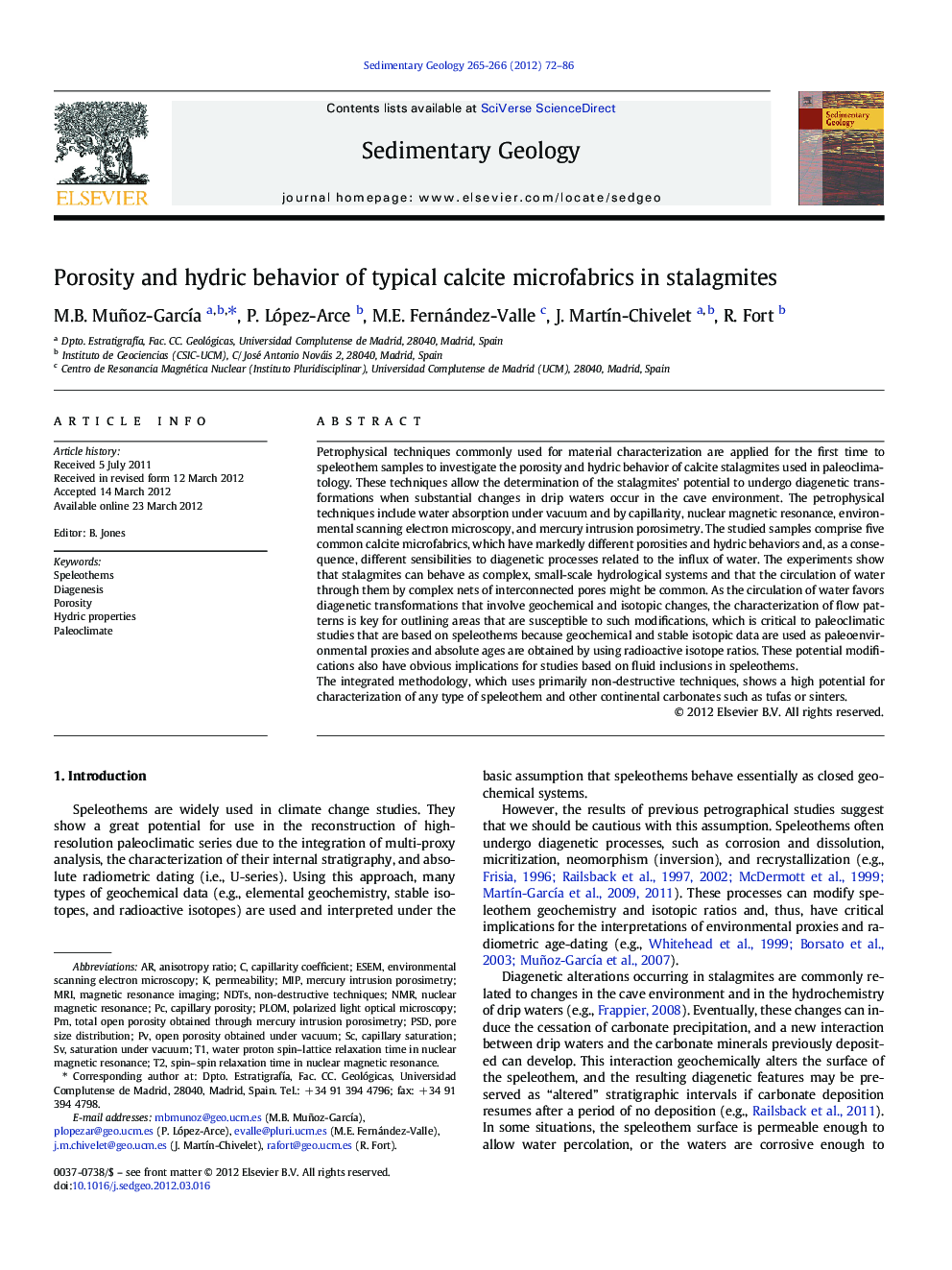| Article ID | Journal | Published Year | Pages | File Type |
|---|---|---|---|---|
| 4689797 | Sedimentary Geology | 2012 | 15 Pages |
Petrophysical techniques commonly used for material characterization are applied for the first time to speleothem samples to investigate the porosity and hydric behavior of calcite stalagmites used in paleoclimatology. These techniques allow the determination of the stalagmites' potential to undergo diagenetic transformations when substantial changes in drip waters occur in the cave environment. The petrophysical techniques include water absorption under vacuum and by capillarity, nuclear magnetic resonance, environmental scanning electron microscopy, and mercury intrusion porosimetry. The studied samples comprise five common calcite microfabrics, which have markedly different porosities and hydric behaviors and, as a consequence, different sensibilities to diagenetic processes related to the influx of water. The experiments show that stalagmites can behave as complex, small-scale hydrological systems and that the circulation of water through them by complex nets of interconnected pores might be common. As the circulation of water favors diagenetic transformations that involve geochemical and isotopic changes, the characterization of flow patterns is key for outlining areas that are susceptible to such modifications, which is critical to paleoclimatic studies that are based on speleothems because geochemical and stable isotopic data are used as paleoenvironmental proxies and absolute ages are obtained by using radioactive isotope ratios. These potential modifications also have obvious implications for studies based on fluid inclusions in speleothems.The integrated methodology, which uses primarily non-destructive techniques, shows a high potential for characterization of any type of speleothem and other continental carbonates such as tufas or sinters.
Graphical abstractFigure optionsDownload full-size imageDownload high-quality image (479 K)Download as PowerPoint slideHighlights► We check the closed system of a stalagmite with respect to drip water. ► Five different microfabrics tested with petrophysical techniques. ► Total open porosity reaches 13.1% in a primary microfacies. ► NMR and saturation under vacuum are suggested before further paleoclimate studies. ► Fluid inclusions are quantified and located with non-destructive techniques.
